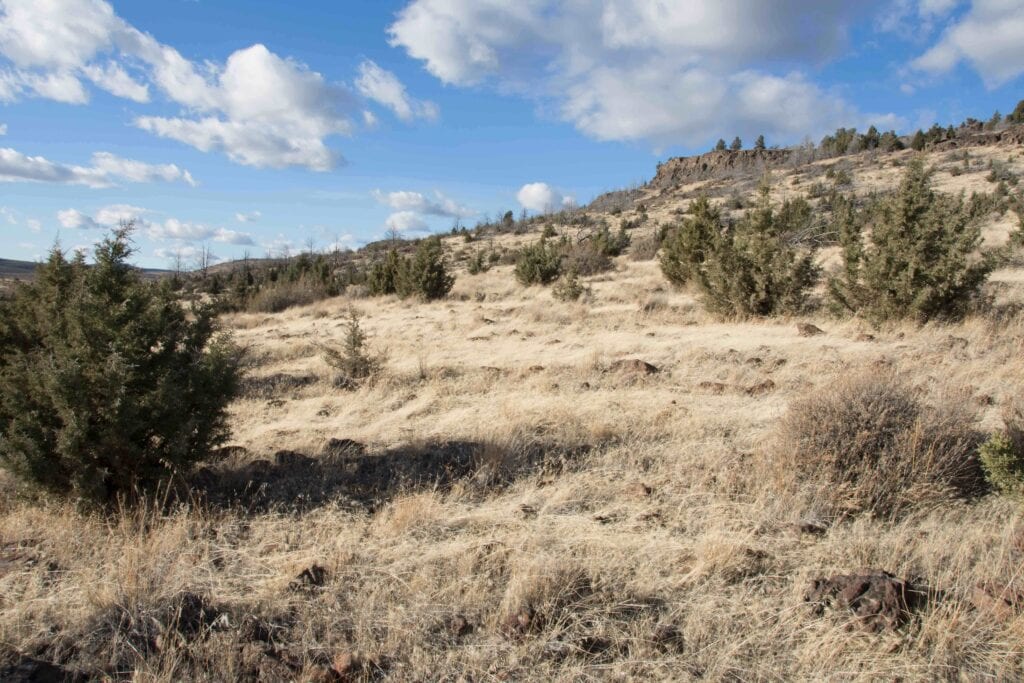PJ101-Invasive Species
Cheatgrass (Bromus tectorum) is the most widespread invasive annual grass in the Great Basin and can readily invade pinyon and juniper woodlands, especially those occupying warmer drier sites. Its ability along with other invasive grasses such as medusahead (Taeniatherum caput-medusae) to invade and/or dominate following a disturbance is closely related to the soil temperature/moisture regime, the abundance of deep-rooted perennial grasses prior to and following a disturbance, and the type and severity of disturbance. The warmer pinyon and juniper woodlands located at lower elevations and/or south aspects have a lower resistance to invasive annuals than the cooler or colder woodlands occupying higher elevations. Also, the stage of woodland development has large implications for the capacity of a woodland to recover (resilience) and to resist invasive species. Increasing tree dominance, increases fuel loads and alters fuel structure. This results in high severity fires leading to high mortality of deep-rooted perennial grasses and opening up the site to invasive annuals. There is also concern for the development of a new steady-state of invasive annual grassland.
For more detailed information and citations refer to: Miller, R.F. and others. 2019. The Ecology, History, Ecohydrology, and Management of Pinyon and Juniper Woodlands in the Great Basin and Northern Colorado Plateau of the Western U.S. US Forest Service, Rocky Mountain Research Station. RMRS-GTR-403. 284 pg. See also, Miller, R.F. and others. 2013. A Review of Fire Effects on Vegetation and Soils in the Great Basin. US Forest Service, Rocky Mountain Research Station. RMRS-GTR-308. 126 pg.
